

Damion Smy
Hyundai i30 N TCR celebrates 10 years of ‘N’ with Gran Turismo 7 debut
10 Hours Ago
Engineering wise, the new i30 Sedan N is almost faultless – only the cheap plastics in the cabin and lack of adaptive cruise control I can legitimately complain about.

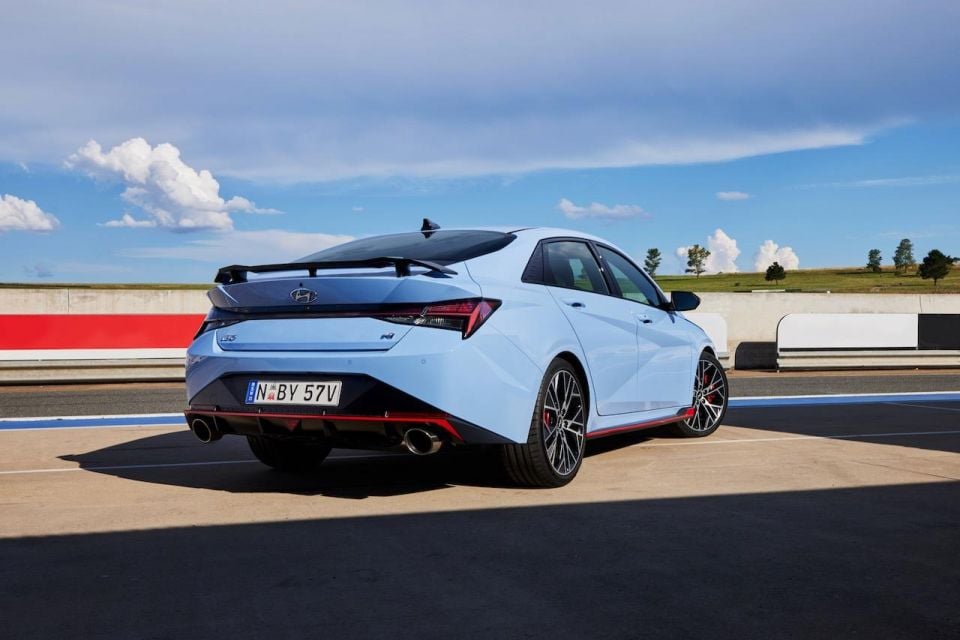

Quickly see how this car stacks up against its competition. Select any benchmark to see more details.
Where expert car reviews meet expert car buying – CarExpert gives you trusted advice, personalised service and real savings on your next new car.
It might be Hyundai’s fourth and final N model for 2021, but the i30 Sedan N is also the most highly-developed and quickest car to ever to wear the N badge.
Critically, and in stark contrast to its i30 Hatch N sibling, the Sedan is based on a more advanced platform (K3) which not only gets a longer wheelbase, but boasts a slew of modifications designed to make it Hyundai’s most dynamically capable car yet.
Headlining the Sedan N’s go-fast arsenal is the rally-inspired integrated drive axle that combines the driveshaft, wheel hub and wheel bearing into a single lightweight unit in the interests of steering feel and cornering performance.
In fact, not only is the unit smaller by some margin, it also shaves 1.7kg off each corner, is 55 per cent more rigid, and allows for a 59 per cent larger wheel bearing, which is able to tolerate more torque.
There’s a list of engineering improvements longer than your arm designed to transform this humble city sedan into a corner-carving track weapon, which also doubles as a segment-leading daily if we’re talking comfort, equipment, and general versatility.
The chassis is reinforced with bracing and additional structures that increase torsional rigidity by almost 30 per cent, thanks to additional floor structures that have been bolted on in the tunnel and behind the front subframe.
Spring rates have been dialled up and paired to the adaptive dampers for better road holding at the limit, as well as more compliance on the road.
Suspension geometry has been overhauled with an entirely new structure and bushings, along with new front strut rings that connect the suspension to the body with more attachment points for more precise body control.

Even the tyres are bespoke to the i30 Sedan N. They’re the top-shelf and super-grippy Michelin Pilot Sport 4S units – wider than ever before, with the letters ‘HN’ written on the sidewall.
Oh, and the newly designed 19-inch alloy wheels have increased stiffness compared with previous N models, and get machined-finish spokes.
While Hyundai’s in-house-developed eight-speed dual-clutch transmission is used across the i30 N range, it’s worth noting it’s a ‘wet’ DCT that’s oil-submerged for less friction and heat. That means you get better torque transfer on the track.
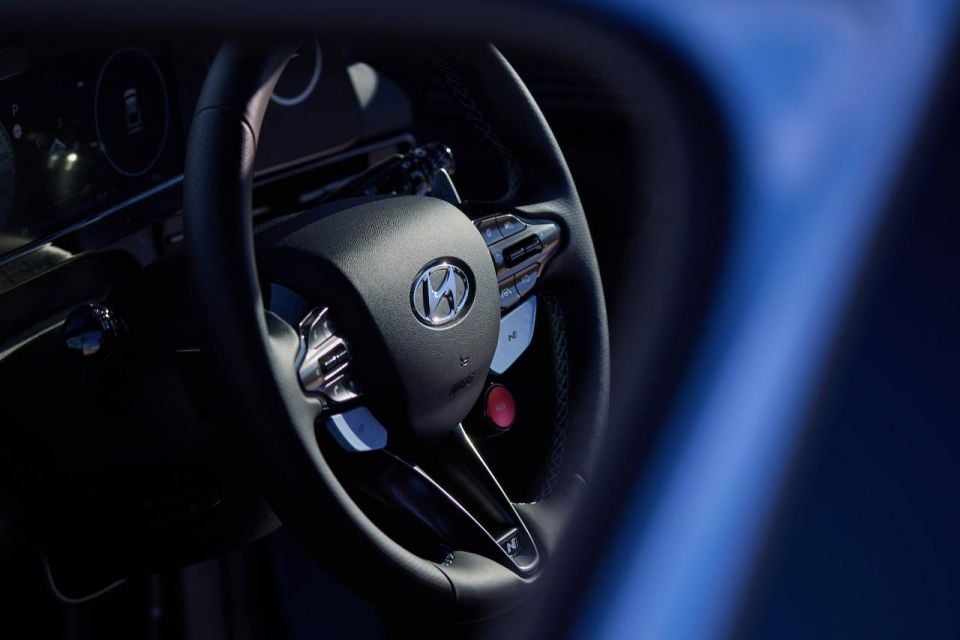
Brakes have always been a real strength of N cars, and while the sedan’s are the same 360mm up front as the hatch’s, they now get a new Brake Prefill function that primes the braking pressure as the driver eases off the throttle.
Everywhere you look there’s been significant changes made, down to the smallest details.
Last but by no means least, the adaptive suspension software has been locally tuned, likely to combat the litany of poor roads across Australia, which we can tell you categorically works a treat on this car.
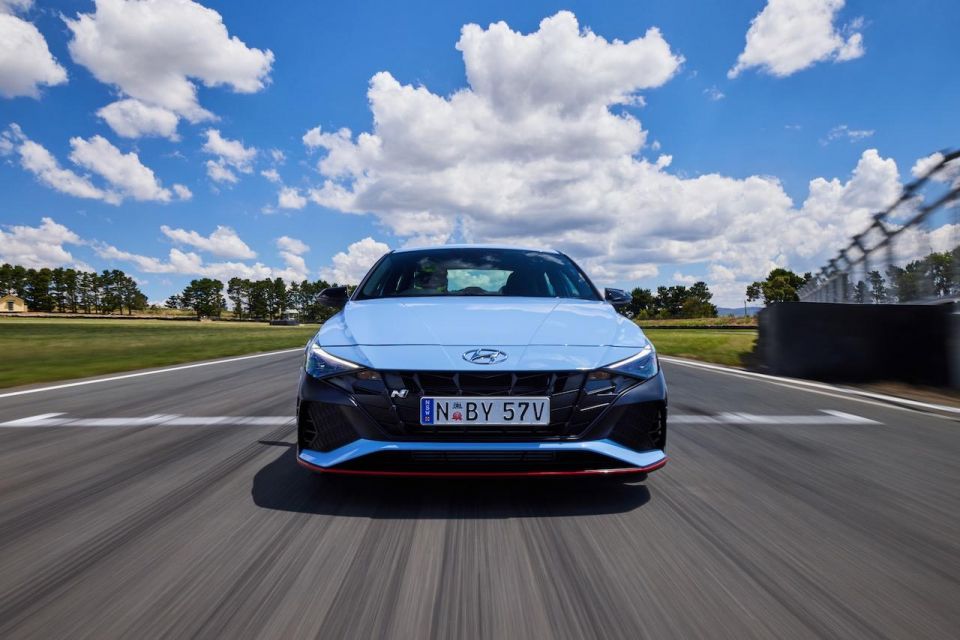
The new 2022 Hyundai Sedan N Premium is sold in a single variant with a 2.0-litre four-cylinder turbocharged petrol engine and costs $49,000 before on-road costs.
Buyers can choose between an either an eight-speed wet-type dual-clutch transmission with multiple drive modes and settings, or a six-speed manual gearbox with auto rev-matching.
There are just two colours included as standard including Polar White and Performance Blue, while all five Premium paints (Cyber Grey Metallic, Fluid Metal Metallic, Phantom Black Mica, Fiery Red Mica and Intense Blue) are optional and cost $495. The only other option is a sunroof, which costs $2000.
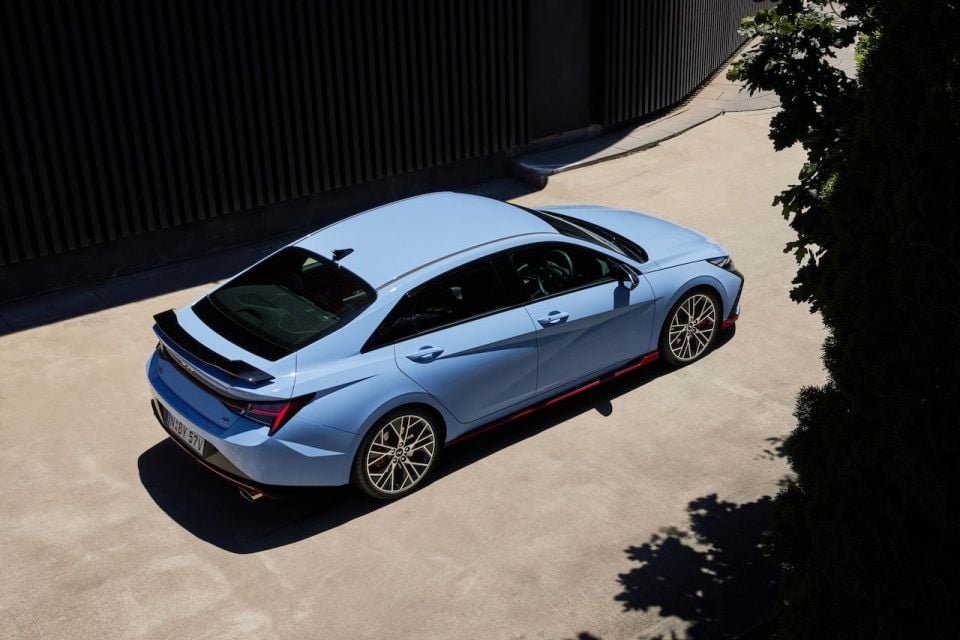
Interestingly, you can get an i30 Fastback N, with a six-speed manual from $49,000, or pay $52,000 for the eight-speed DCT, plus on-roads. Order books are due to close soon though, so you better get in quick.
Then, there’s the i30 N Premium hatchback, priced from $47,500 for the six-speed manual or $52,000 for the N Premium with sunroof, if you prefer the hatchback body.
Rival performance sedans for under $50,000 are non-existent. Audi offers the quicker S3 Sedan from $72,400 for those with deeper pockets, but you’ll only get three years factory warranty compared to Hyundai’s five-year term.



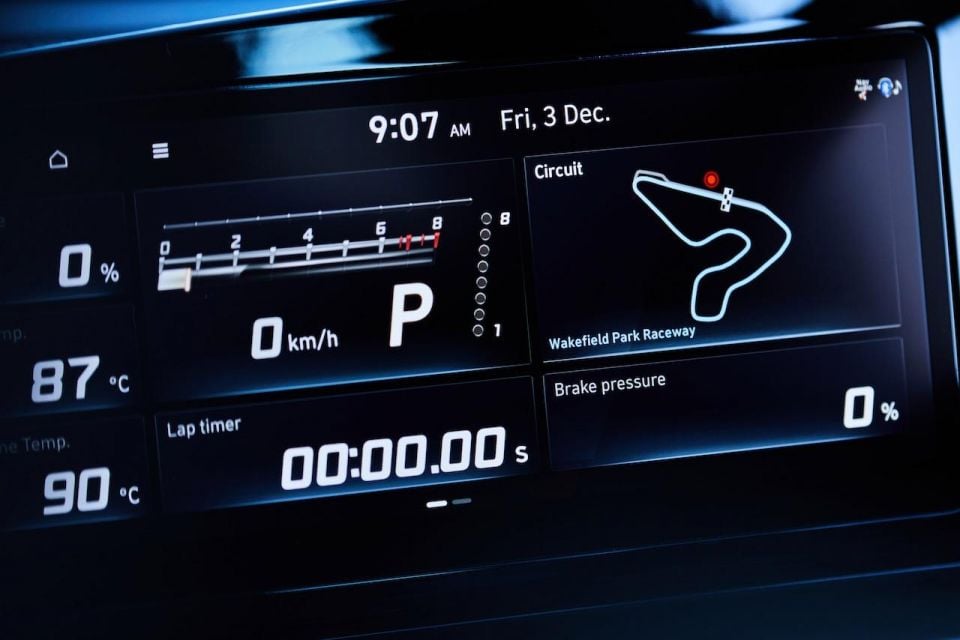
Buy your new car without the stress. It's fast, simple and completely free.

Great service from Travis and team, second time I have used this business would not hesitate to recommend them to anyone
Craig C.
Purchased a Ford Ranger in Sunshine Coast, QLD
CarExpert helped Craig save thousands on his Ford Ranger, now let us save you on your next new car.
Find a dealHyundai i30 Sedan N Premium highlights:
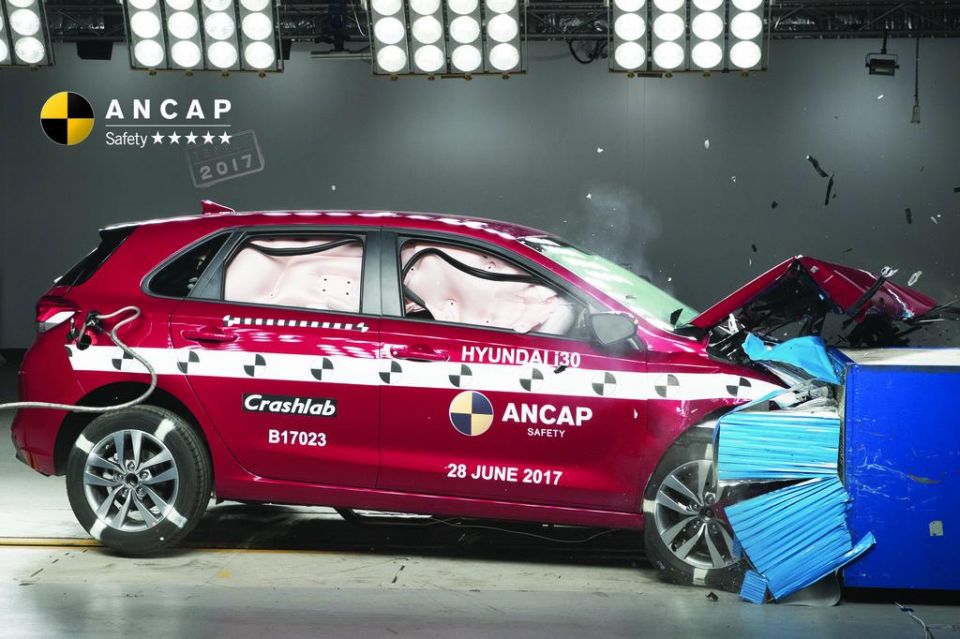
Hyundai’s i30 Hatch gets a five-star rating from ANCAP based on crash testing performed in 2017, though the i30 Sedan hasn’t been tested and doesn’t share the hatch’s rating given it’s on a different platform.
The i30 Hatch scored 14.01/16 for the frontal offset test, 16.00/16.00 for the side impact test, 2.00/2 for the Pole test, for a total score of 35.01/37.
Perhaps, more telling is the fact the i30 Sedan N doesn’t get adaptive cruise (only standard cruise control) due to its camera-based system, rather than using radar.
There are six airbags, along with an extensive suite of advanced active safety and driver assist systems including:
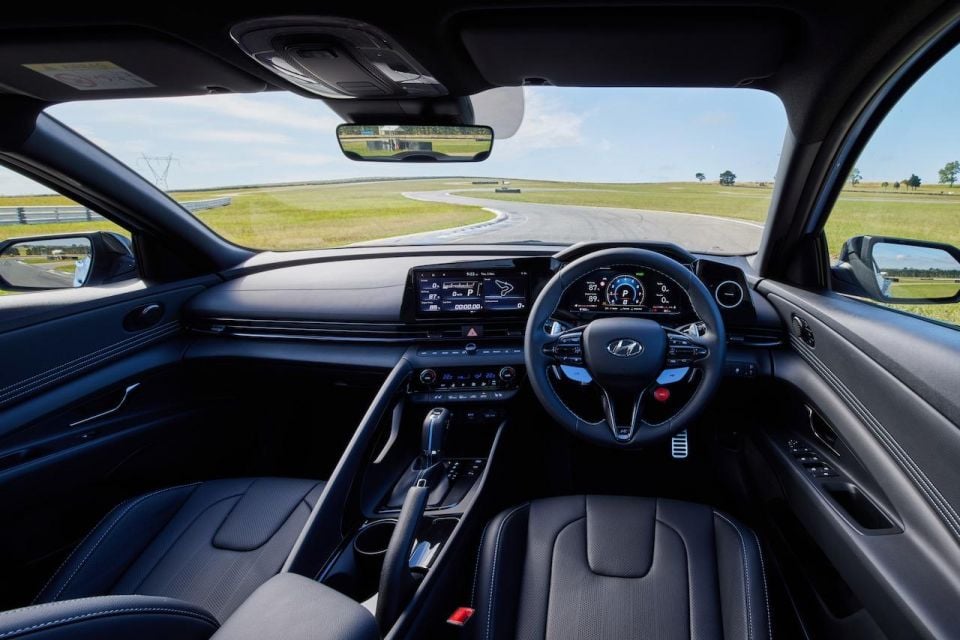
Inside, there’s plenty of luxury kit to make the i30 Sedan N Premium look and feel… premium.
The sports leather seats up front are superb for their high degree of cushioning and bolster, as well as the ease of hopping in and out, though the car is so adept on track that optional racing-style buckets would make perfect sense – as long as you didn’t mind giving up heating and cooling.
Headlining the cockpit are two 10.25-inch displays including a fully-configurable digital instrument cluster, which can be changed at the touch of two ‘N’ buttons on the steering wheel. Said steering wheel is also perfectly round with a tactile leather rim with perforated grips and heating function.
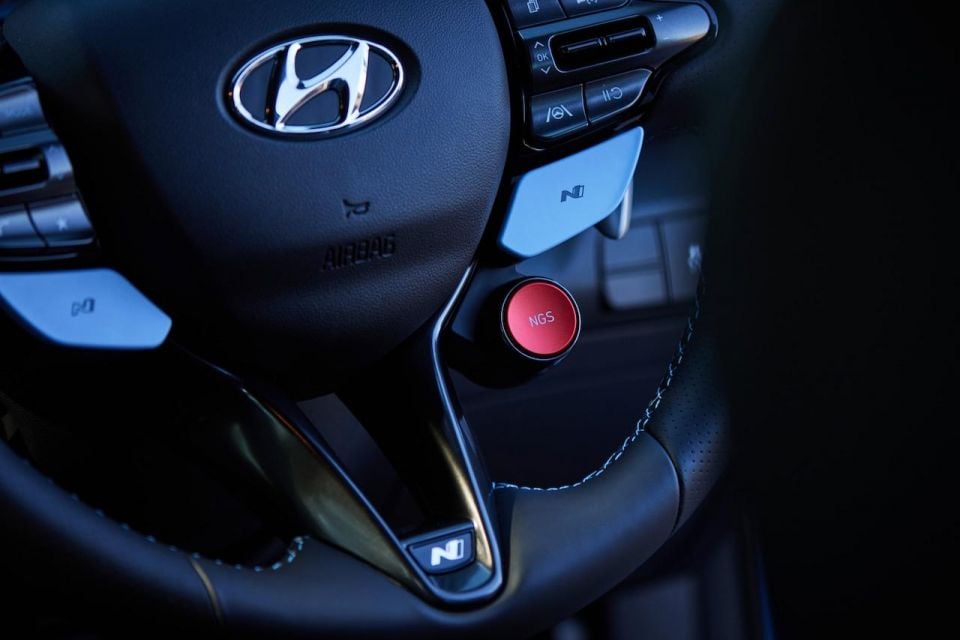
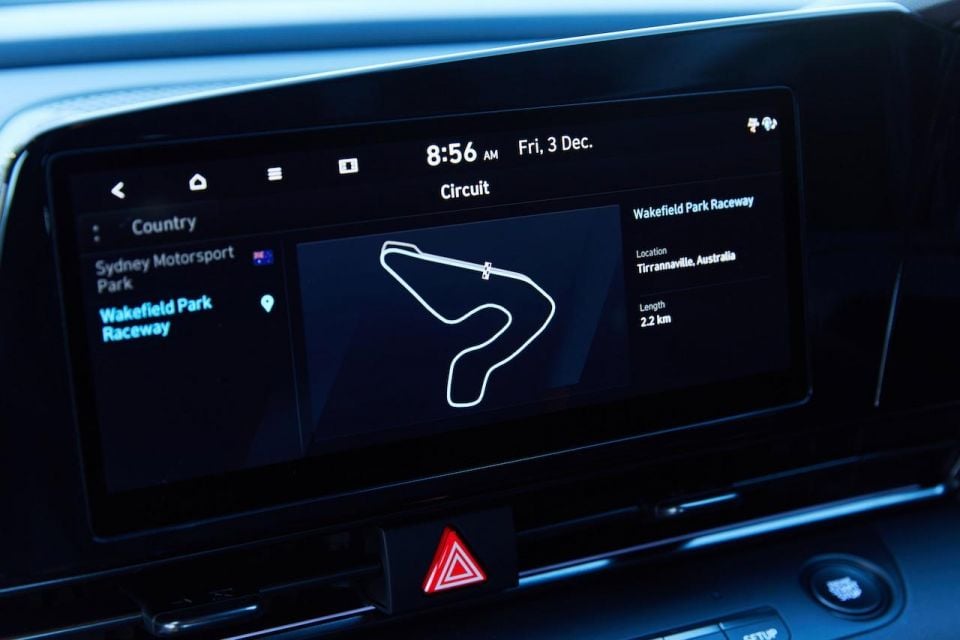
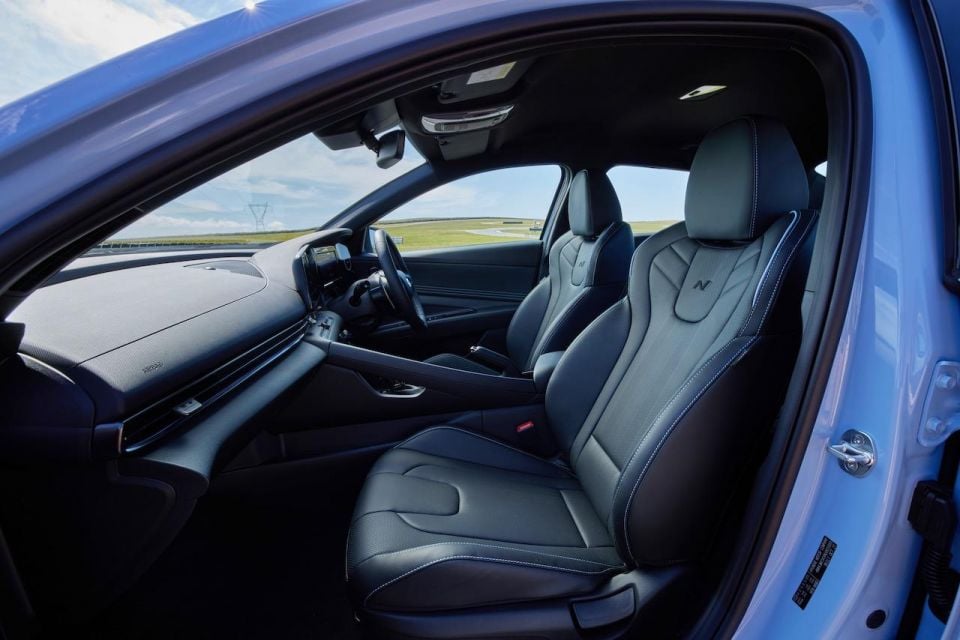
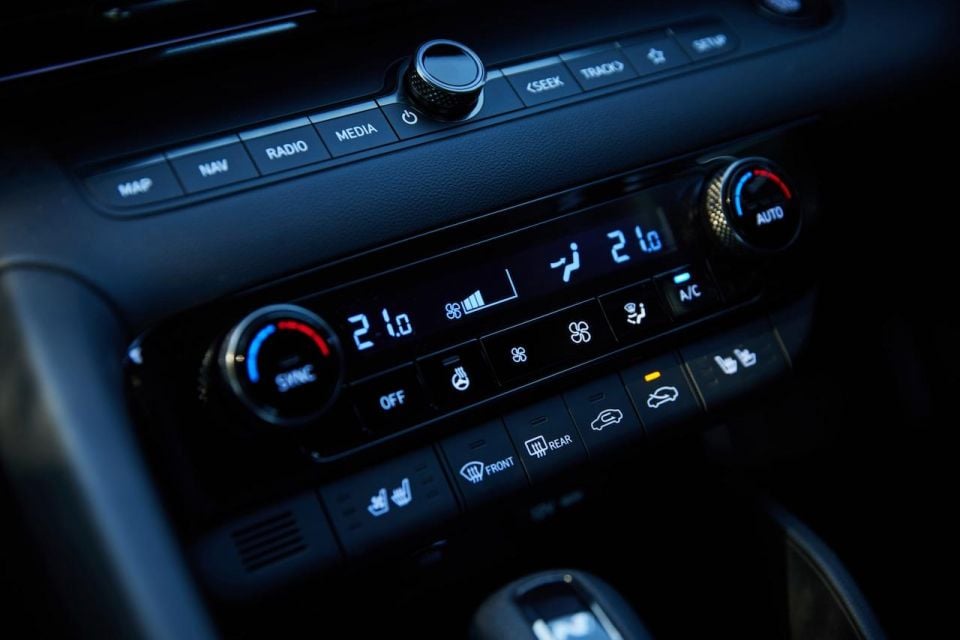
You’ll also notice a red anodised NGS button (N Grin Shift), which when pressed gives the driver maximum engine power and shift speed for 20 seconds – it’s no joke.
The infotainment system also offers a unique feature called Track Maps, which alerts the driver when they’re near a compatible race circuit, in this case Sydney Motorsport Park or Wakefield Park, with a view to add more circuits as they come on stream.
It’s a brilliant widget that also acts as an automatic lap timer that records all laps in a session, and it’s a feature I’ve only seen on the latest 992-series Porsche 911.
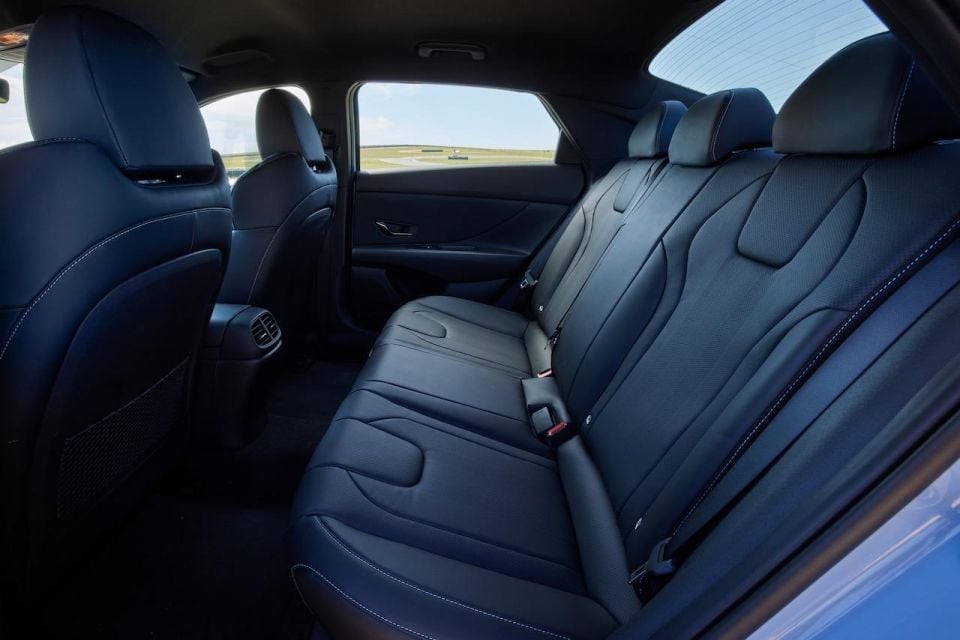
Ergonomically, the driver-centric cockpit is excellent, offering a relatively low-slung driving position with plenty of room in the pedal box, which is set up for perfectly executed heel-and-toe shifting for those that fancy the six-speed manual over the eight-speed DCT.
While there’s lots of soft touch points up front, it’s also got its fair share of hard, scratchy plastics that tend to rob the cockpit of a premium look and feel, outside of the technology.
Given its performance bent, we’d like to suggest an Alcantara-trimmed handbrake lever with stitching to match the exterior paint, as an example. Just a smattering of Alcantara would go a long way to give a car like this more class and the performance-like ambience it deserves.
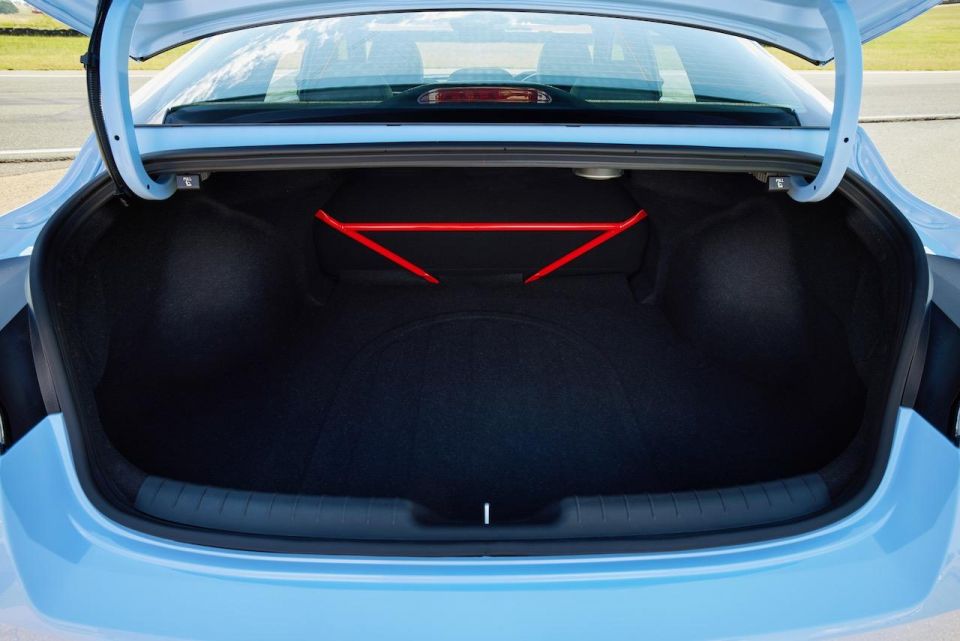
There are also a couple of USB-A ports and a 12V socket in the console box, but we couldn’t see any for the rear seats, although the centre armrest back there gets cupholders and passengers get rear air vents.
That said, all-round vision is good, and there’s plenty of room throughout both seat rows for passengers along with plentiful storage space for keys, wallets, phones and drink bottles.
The boot opens with a large aperture and can swallow up to 464L of luggage, and there’s a space saver wheel and tyre under the floor with 60/40 split-fold seats.
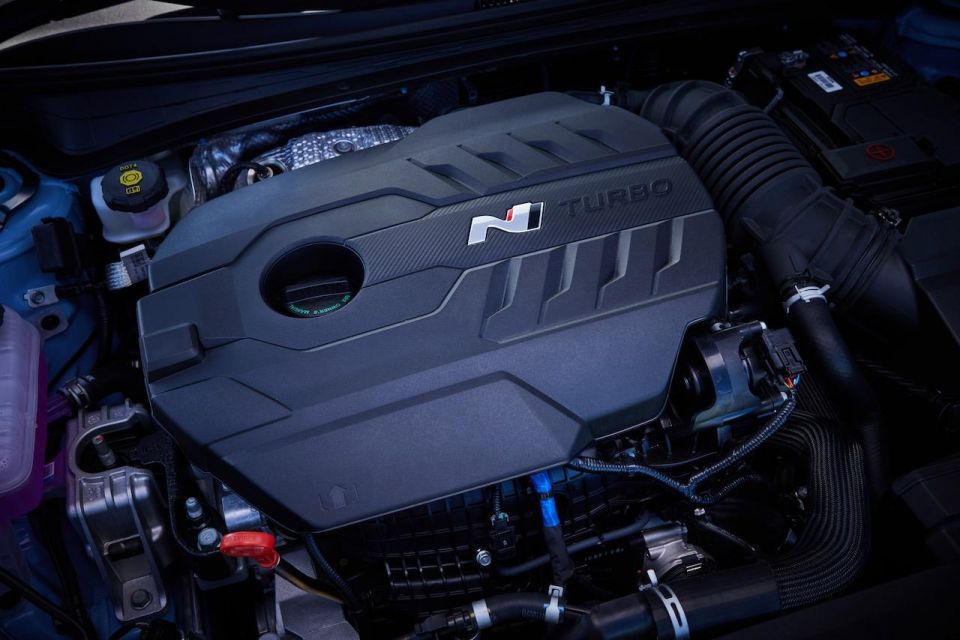
The i30 Sedan N gets the same 2.0-litre ‘T-GDi’ turbocharged four-cylinder petrol engine as the i30 Hatch N and Kona N, making 206kW of power from 5500rpm to 6000rpm, and 392Nm of torque between 2100rpm and 4700rpm.
It’s paired with either an eight-speed (wet-type) dual-clutch transmission or a six-speed manual with automatic rev-matching.
Moreover, the engine is able to maintain boost pressure through to 5500rpm, but with the N Grin Shift mode activated, power is increased to 213kW for 20 seconds.
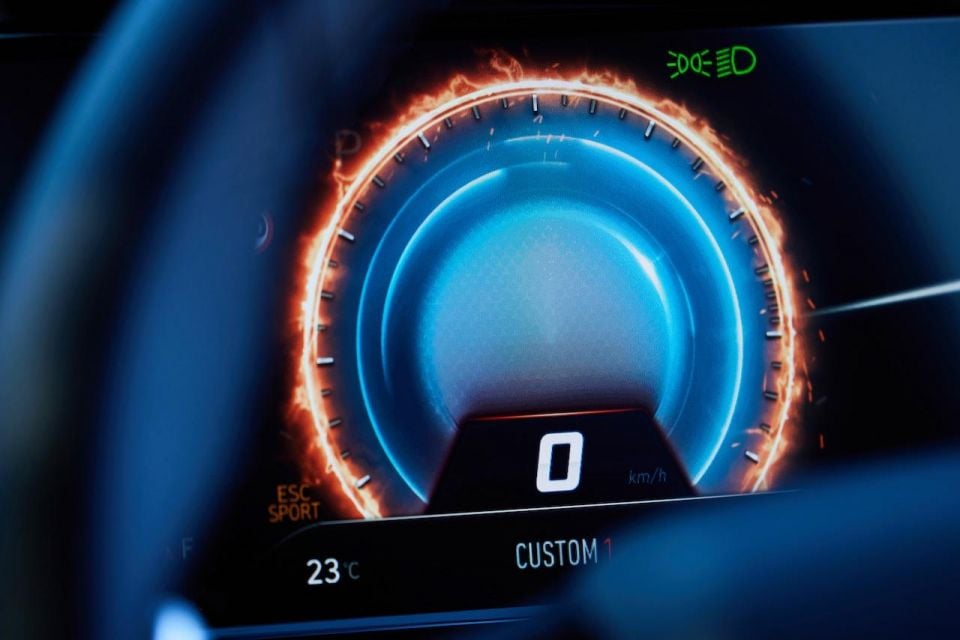
While we didn’t get the chance to run 0-100 times during our track sessions at Sydney Motorsport Park, Hyundai claims the i30 Sedan N can complete the benchmark sprint in 5.3 seconds with a top speed of 250km/h, making it the fastest car in the brand’s entire range of combustion-powered cars.
By way of comparison, the i30 N hatch needs 5.4 seconds, while the Kona N clocks 5.5 seconds, both when using the eight-speed DCT transmission.
Opt for the six-speed manual transmission in the i30 Hatch N and the 0-100km/h sprint time goes to 5.8s, but with the same 250km/h top speed.
The i30 Sedan N claims combined fuel consumption of 8.2L/100km regardless of transmission.
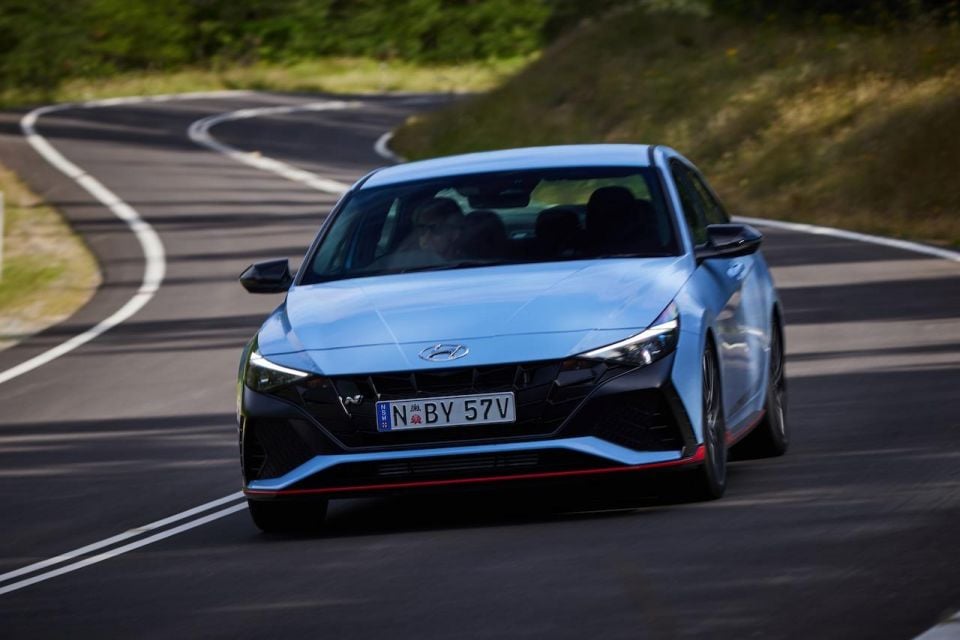
Where expert car reviews meet expert car buying – CarExpert gives you trusted advice, personalised service and real savings on your next new car.
I’d already heard the inside word that the i30 Sedan N was on a different level to its hatchback and Fastback stablemates – way more focused and engaging, with a sharper and more responsive front end.
So, you can understand why I was keen to get myself on the launch program that including a spirited B-road drive on deserted roads in regional NSW, as well as a hardcore track session at Sydney Motorsport Park.
That’s proof right there that driving an affordable performance car at a good clip can often be more thrilling than piloting a stupidly fast supercar, especially Down Under with our strict speed limits.
I get why certain enthusiasts still want a manual transmission for heightened driver engagement, I’m one of those and own a Mustang Bullitt. But these days with dual-clutch gearboxes and paddle shifters that flick between ratios faster than previous F1 cars, that’s becoming less important.
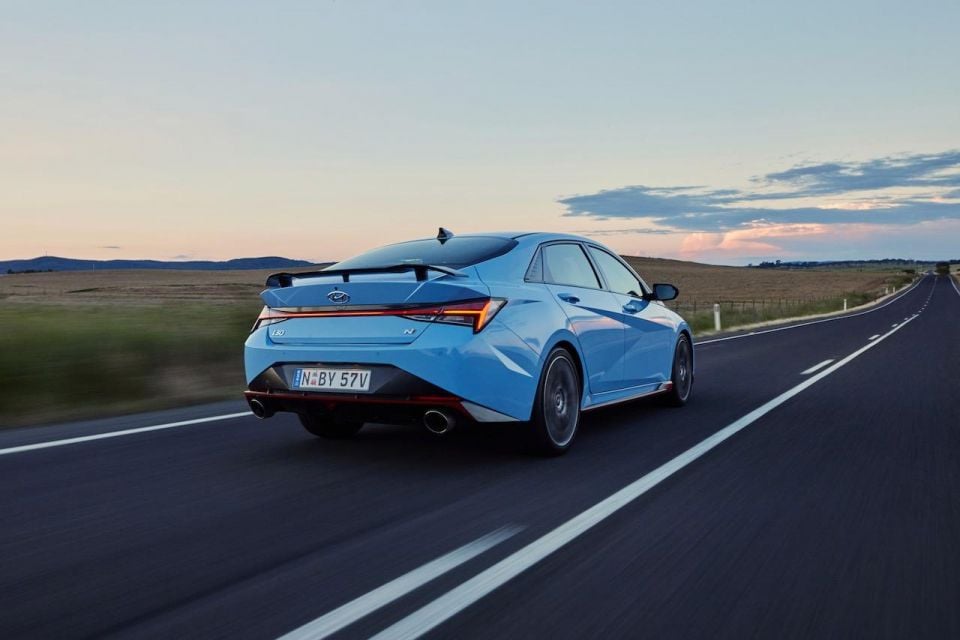
Even more so with Hyundai’s in-house DCT. It’s a wet-clutch type that reduces friction and heat for better on-track performance, and is one of the best units in the business regardless of price, outside those in proper top-shelf sports cars like Porsche’s PDK.
Don’t get me wrong, I got plenty of seat time with the six-speed manual, and it’s a short-shift unit you don’t have to muscle. It’s also got automatic rev-matching which you eventually give into, no matter how good you are at heel and toe shifting, or how perfect the pedal set-up is.
The fact is, the eight-speed dual-clutch ‘box is more than likely over-engineered for a car costing less than fifty grand. It’s a unit that can clearly take massive punishment on track.
Hit the starter button and there’s volume and character to the exhaust note. Throttle response is noticeably sharper to me, with little or no low-down lag to deal with.
The engine feels strong from the get-go. There’s more muscularity in any gear and across the most of the rev range than I recall in the hatch. All the controls are more reactive and more linear, too.
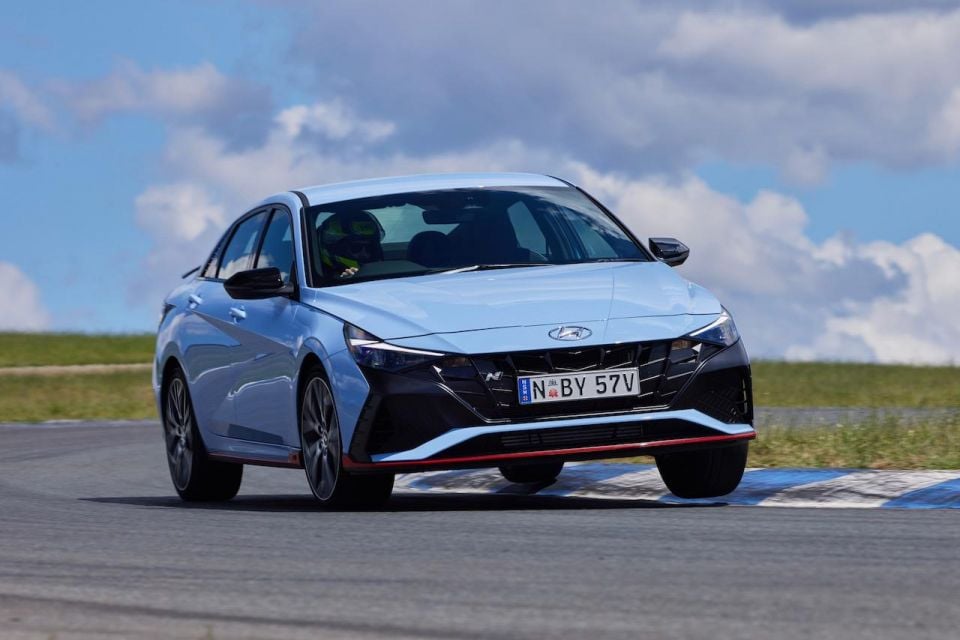
That throttle response I mentioned above is partly down to the Sedan N’s a unique high-flow intake airbox that’s bigger because the newer platform affords more room under the bonnet, and that active variable exhaust system helps too.
Depending on the conditions, you’ll want to customise both ‘N’ buttons on the steering wheel. For hard charging on B-roads we dialled up Sport and Sport+ for steering and engine, but with the suspension set to Normal or Sport on the coarse-chip stuff.
But when you hit the undulating sections with the occasional bump or two, its best to set the dampers to maximum stiffness as the car won’t hit the bump stops and feels more settled at speed.
This is one quick small sedan and it covers ground very, very fast, but with exceptional stability and composure. Its performance is noticeably beyond anything in the current hot hatch class, with the exception of more expensive kit from the premium German brands.
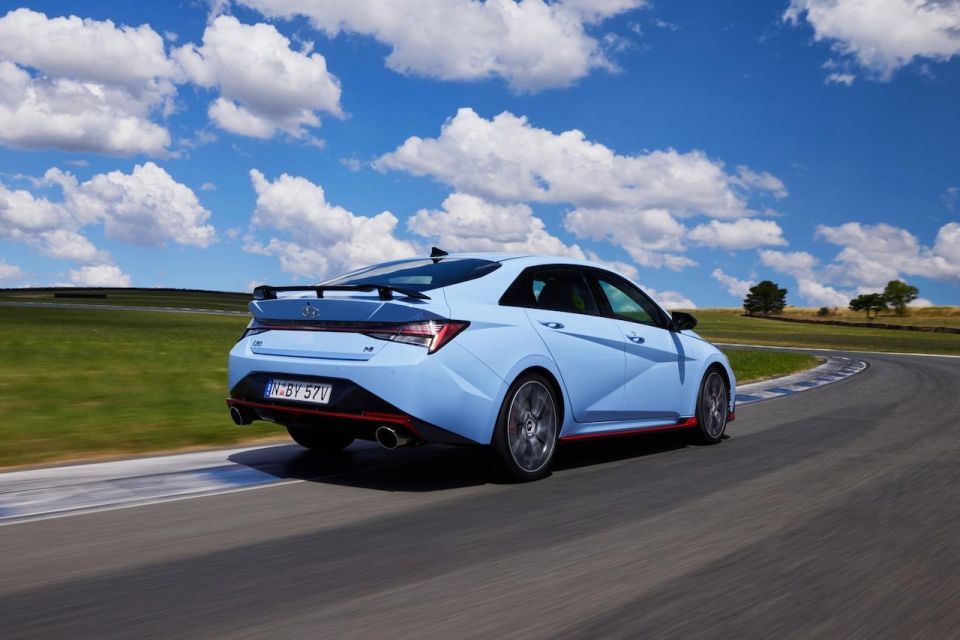
It’s not just the pace, though its speed out of corners is truly surprising, it’s the ride and handling that is quite remarkable for a sub-$50K car.
Set it in Normal for the worst that suburbia can throw at it, and bump absorption is outstanding. But even in Sport and Sport+, while noticeably firmer, suspension compliance is outstanding. And that’s riding on 19-inch wheels with low-profile tyres.
Hyundai told us the chassis tune on the development cars it received was already polished, but then the local development team fine-tuned the software across Normal and Sport modes.
The results are telling. Grip levels, bump absorption, mid-corner traction and mid-corner response is superior to any hot hatch/sedan that I’ve driven at this end of the market.
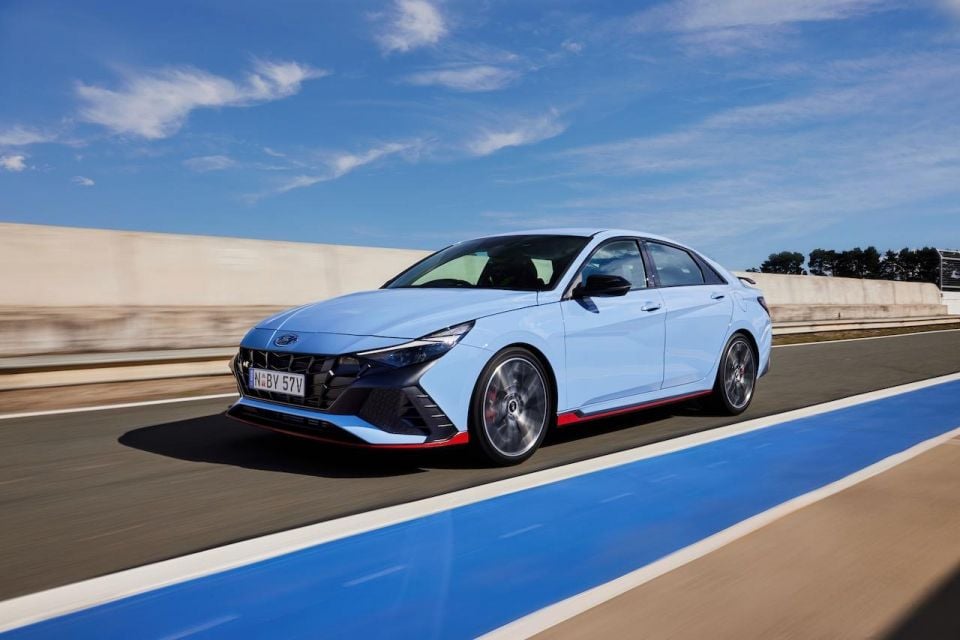
From the very first time I drove the i30 N hatch on track in Italy, I was impressed with the braking power and complete lack of brake fade even after a few five-lap sessions going all day.
The i30 Sedan N takes braking power up a notch or two, with the same size brakes but now incorporating a new brake prefill function, which primes the brake pedal as you roll off the throttle. It still feels linear, even on the racetrack.
Day two of the drive programme saw us on track at Sydney Motorsport Park – a fast-flowing circuit with big speeds down the straight and plenty of hard braking into tight corners.
While I only sampled the Sedan N with DCT (my choice entirely), it’s hard to think of a more capable car in this segment. It’s as if it was designed specifically to be used regularly on track.
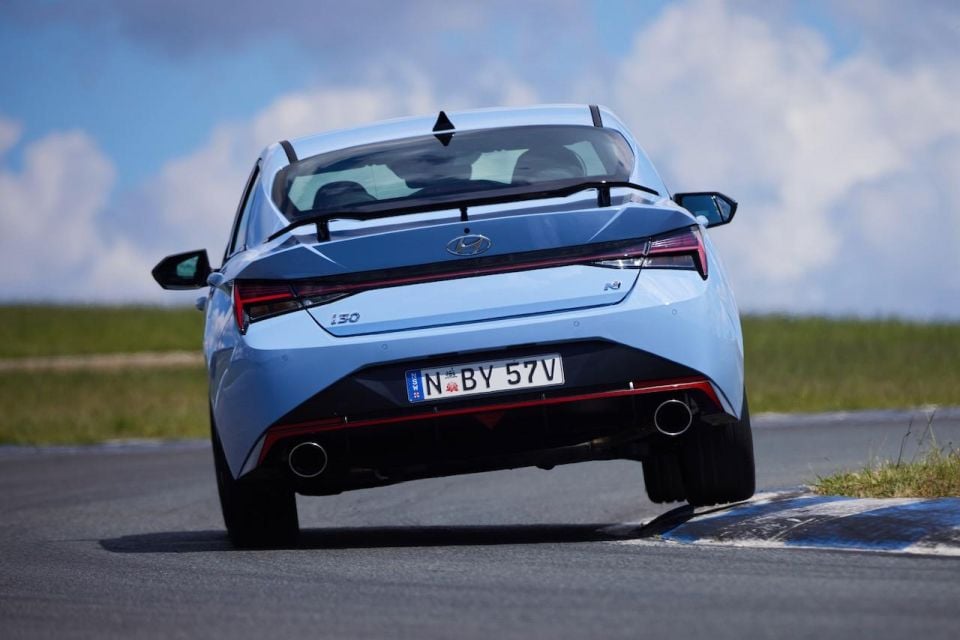
We threw everything into Sport+ except the ESC – which we left in Sport – and the car was lapping in 1:54 minutes consistently without drama. It’s capable of a 1:52 straight out of the box, which really is quite remarkable for a comfortable daily driver with all the kit you could ever want.
The cars were mercilessly thrashed for several hours and apart from rising tyre temperatures and some slight brake fade into turn two in one particular car, the Sedan N was next to flawless.
Track days just became more fun, too, with Hyundai N’s new Track Maps. Hit the star button under the infotainment screen and up pops a track map of SMP or Wakefield Park (more maps will follow), along with an auto lap timing feature that knows where the start/finish line is and will record all your lap times, so there’s argument.
It’s brilliant and the sort of feature you only find on high-end sports cars like the Porsche 911, as mentioned earlier.
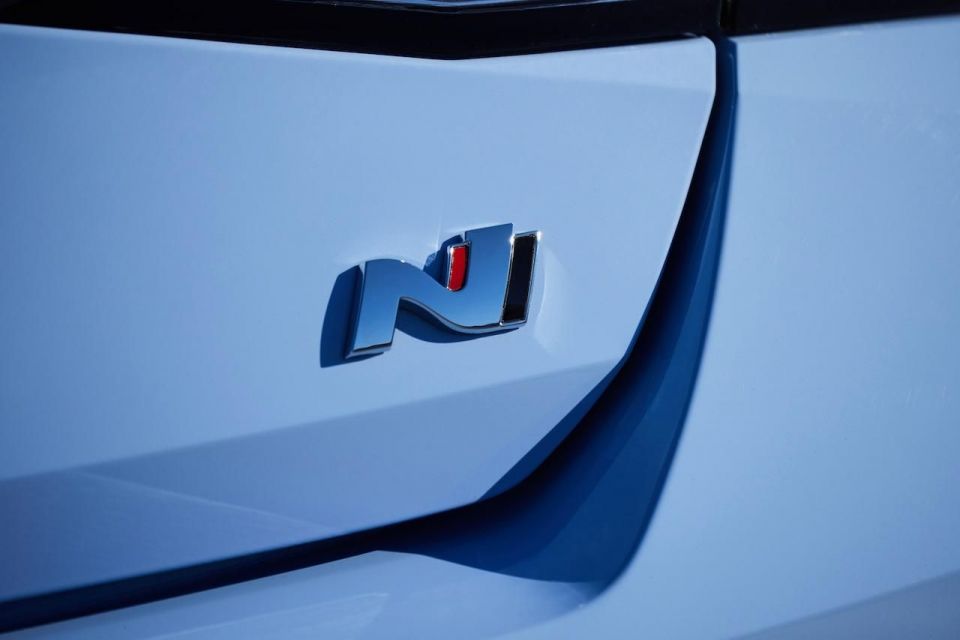
Like the entire Hyundai range, the i30 Sedan N is backed by a five-year, unlimited-kilometre warranty, with up to 10 years of roadside assist.
Service intervals are 12-months or 10,000km – whichever comes first – and a lifetime service plan that includes scheduled servicing for $335 per annum for the first five years.
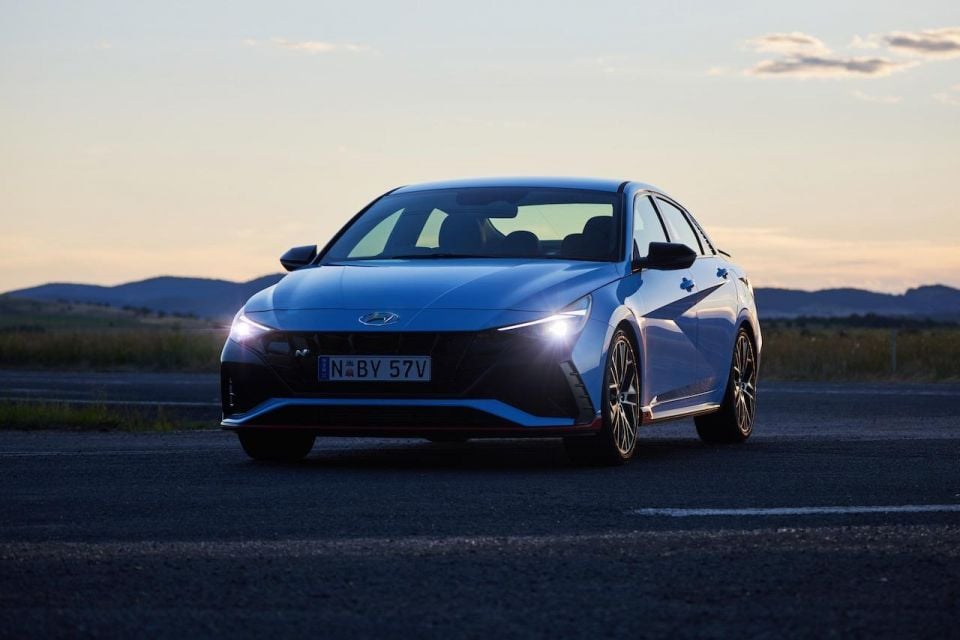
It’s not just the fact the i30 Sedan N is demonstrably quicker than anything close to its price point, it’s the fact it performs better on track than many performance cars costing many thousands more, and yet is also superior as a daily driver with one of the best adaptive suspension systems in the business.
Engineering wise it’s next to faultless, it’s only the cheap plastics adorning much of the cabin and its lack of active cruise control I can legitimately complain about.
If you’re prepared to sacrifice the convenience of the i30 Hatch N in favour of more room and a boot, you’ll have yourself the ultimate N car and one that will wipe the smile from its rivals’ faces by some margin.
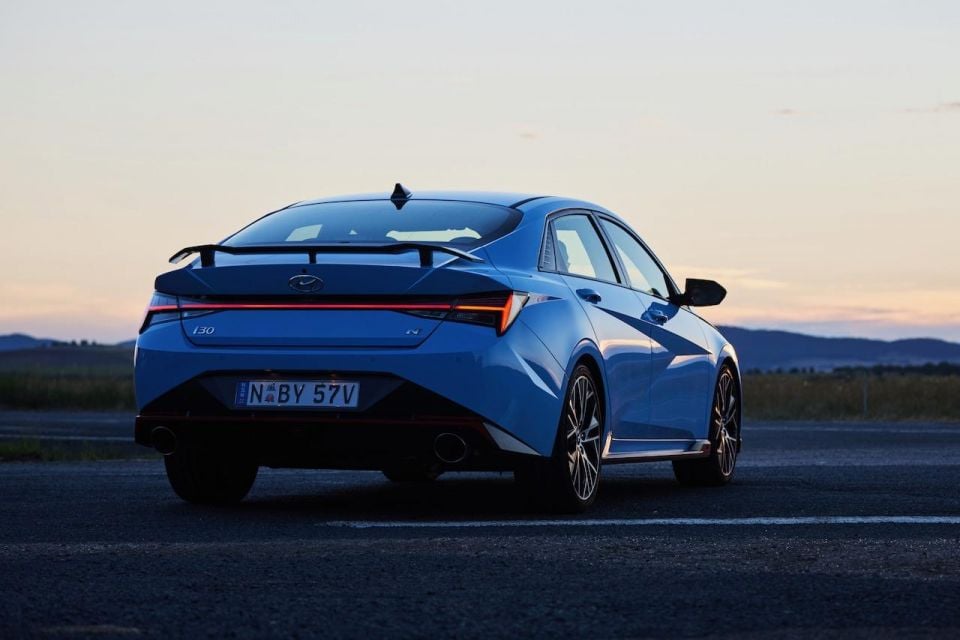
Click the images for the full gallery
MORE: Everything Hyundai i30
Where expert car reviews meet expert car buying – CarExpert gives you trusted advice, personalised service and real savings on your next new car.
Anthony Crawford is a CarExpert co-founder and senior presenter with 20+years in automotive journalism and content creation.


Damion Smy
10 Hours Ago
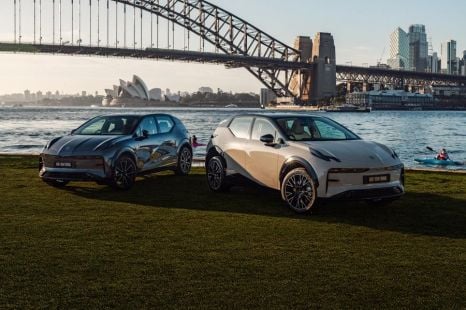

Max Davies
16 Hours Ago


Max Davies
3 Days Ago


Damion Smy
4 Days Ago
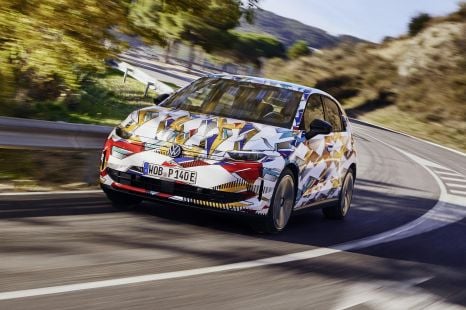

William Stopford
7 Days Ago
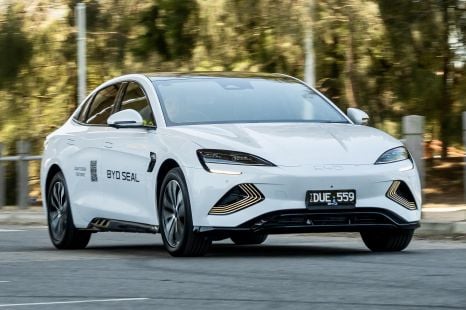

Max Davies
8 Days Ago